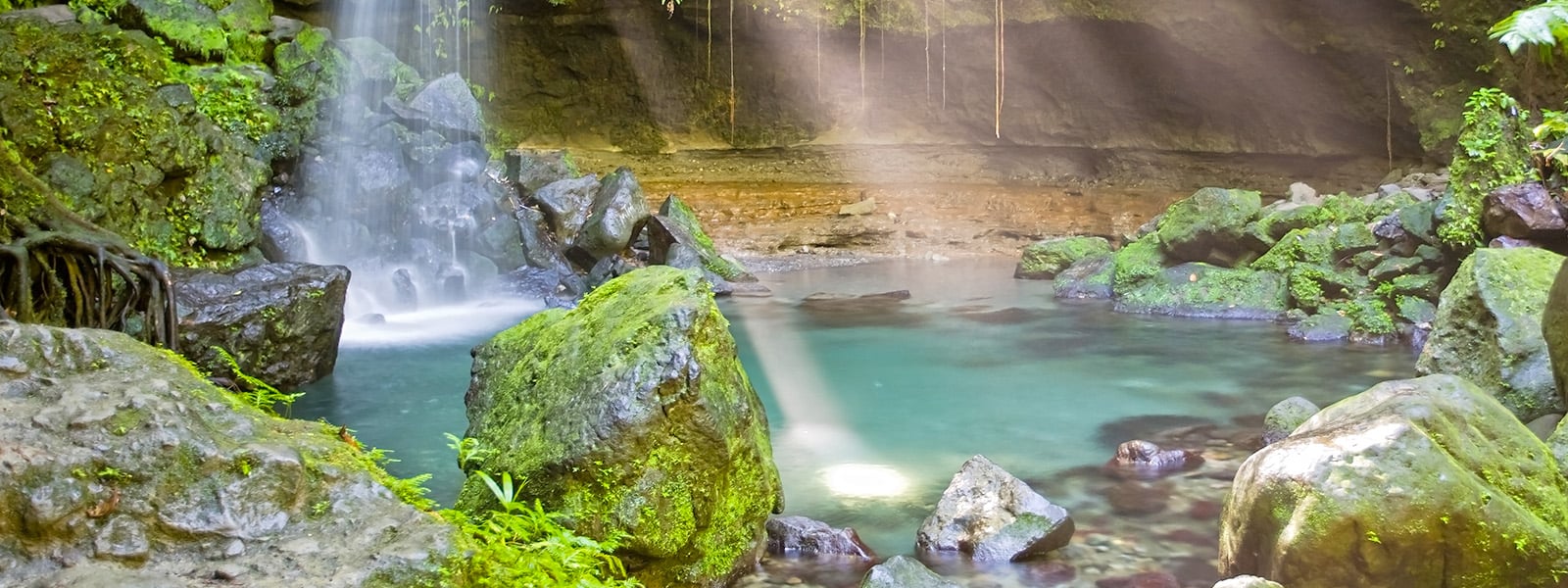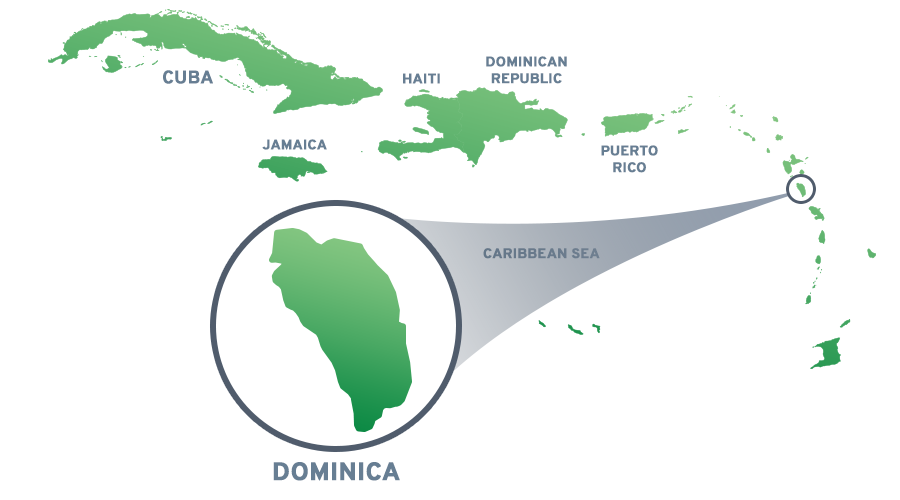About Dominica

Location
Latitude 15˚ 20’ N, Longitude 61˚ 22’ W, between the French Overseas Departments of Guadeloupe and Martinique.
Official Name
Commonwealth of Dominica.
Languages
Dominica is a former a British colony and as such, English is the main and official language. Creole, a French dialect consisting of African words and expressions is also widely spoken, and is considered the second language of Dominica. Spanish is spoken to a much lower extent due to the small Hispanic population living on the island.
Capital City
Roseau
Surface Area
751 km2 (289.5 sq mi)
Time Zone
GMT-4
Population
72,293 according to 2011 census.
Climate
Two main seasons- wet and dry season. Humid tropical marine, minimal seasonal variation between wet and dry season; high precipitation during wet season.
Highest Peak
Morne Diablotin – 1730 m (4,747 ft)
Head of State
The head of state is the President.
Head of Government
The head of government is the Prime Minister.
Independence
Dominica became independent on November 3rd, 1978.
